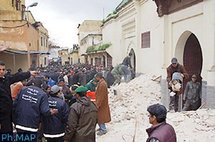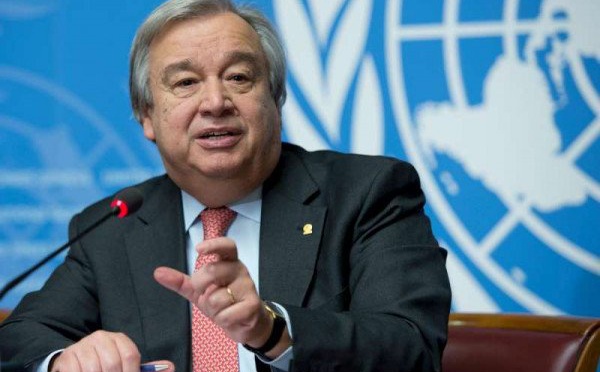
Television pictures showed hundreds of locals scrambling to clear the debris in a desperate search for survivors.
Rescuers worked with shovels -- and some with their bare hands -- while others formed human chains to carry away rubble from the site of the disaster.
"Apart from the Friday prayers, the faithful were also offering funeral prayers for a deceased person whose body was inside the mosque," a local official said.
The interior ministry earlier announced that the minaret toppled at 1245 GMT, giving an initial toll of at least 11 dead, which rose steadily as hours passed.
Rescuers initially struggled to sift through debris because the mosque was located in the crammed and bustling Old City and surrounded by high walls delineating the quarter.
Emergency services sent the most seriously injured to hospital in Fes, the "spiritual capital" of the kingdom located 60 kilometres (37 miles) north of the town. Those less seriously hurt were taken for treatment in Meknes itself.
The interior minister and the minister of religious affairs rushed to the site to supervise rescue operations.
Emergency workers also set up a team to offer psychological support to those traumatised by the disaster.
Morocco has suffered weeks of heavy rains, causing flooding that had already claimed several lives, cut off roads and destroyed crops in both the north and south of the country.
The tragedy at the Bab Berdieyinne mosque was the worst of its kind in the north African kingdom, whose cities and towns have ancient quarters with buildings dating back several centuries.
The mosque, built at the initiative of the country's first woman minister, Khnata Bent Bakkar, was constructed with rammed earth. Its towering minaret was one of the town's landmarks.
King Mohammed VI has meanwhile ordered the reconstruction of the minaret "keeping to its original form."
--------------------------------------------------------------------------------
Rescuers worked with shovels -- and some with their bare hands -- while others formed human chains to carry away rubble from the site of the disaster.
"Apart from the Friday prayers, the faithful were also offering funeral prayers for a deceased person whose body was inside the mosque," a local official said.
The interior ministry earlier announced that the minaret toppled at 1245 GMT, giving an initial toll of at least 11 dead, which rose steadily as hours passed.
Rescuers initially struggled to sift through debris because the mosque was located in the crammed and bustling Old City and surrounded by high walls delineating the quarter.
Emergency services sent the most seriously injured to hospital in Fes, the "spiritual capital" of the kingdom located 60 kilometres (37 miles) north of the town. Those less seriously hurt were taken for treatment in Meknes itself.
The interior minister and the minister of religious affairs rushed to the site to supervise rescue operations.
Emergency workers also set up a team to offer psychological support to those traumatised by the disaster.
Morocco has suffered weeks of heavy rains, causing flooding that had already claimed several lives, cut off roads and destroyed crops in both the north and south of the country.
The tragedy at the Bab Berdieyinne mosque was the worst of its kind in the north African kingdom, whose cities and towns have ancient quarters with buildings dating back several centuries.
The mosque, built at the initiative of the country's first woman minister, Khnata Bent Bakkar, was constructed with rammed earth. Its towering minaret was one of the town's landmarks.
King Mohammed VI has meanwhile ordered the reconstruction of the minaret "keeping to its original form."
--------------------------------------------------------------------------------









 Home
Home Politics
Politics









